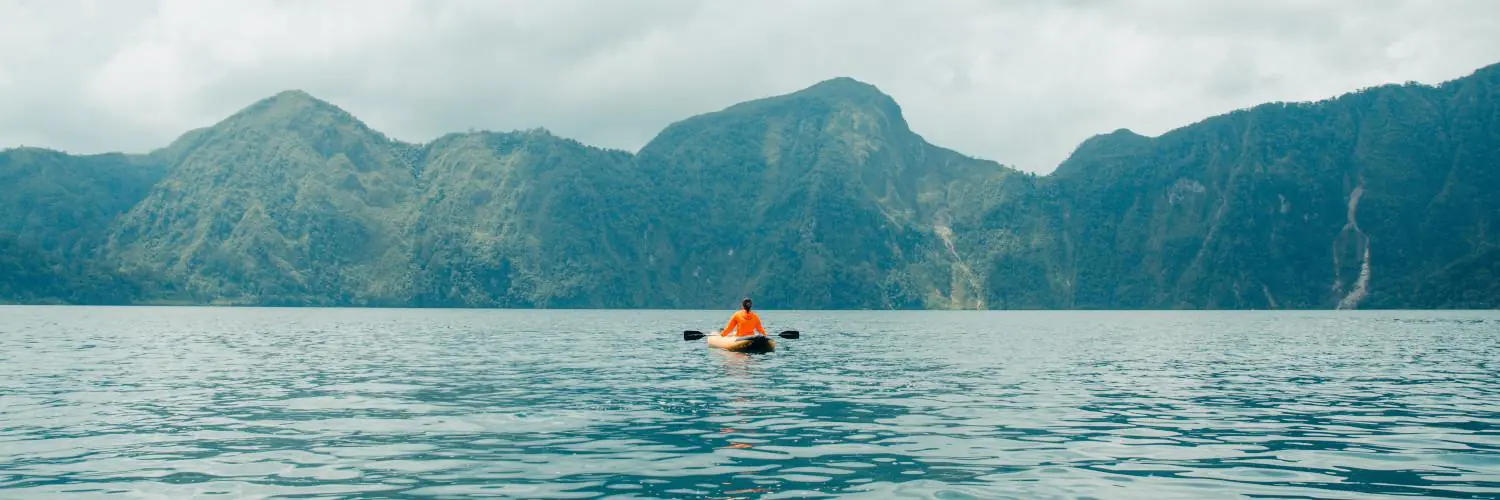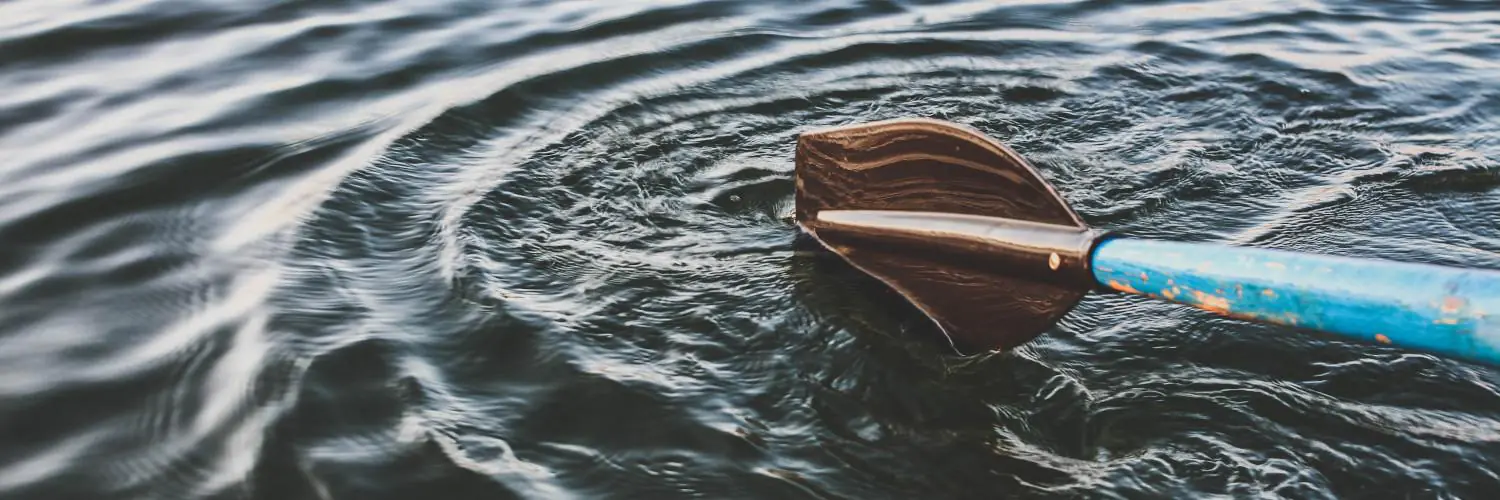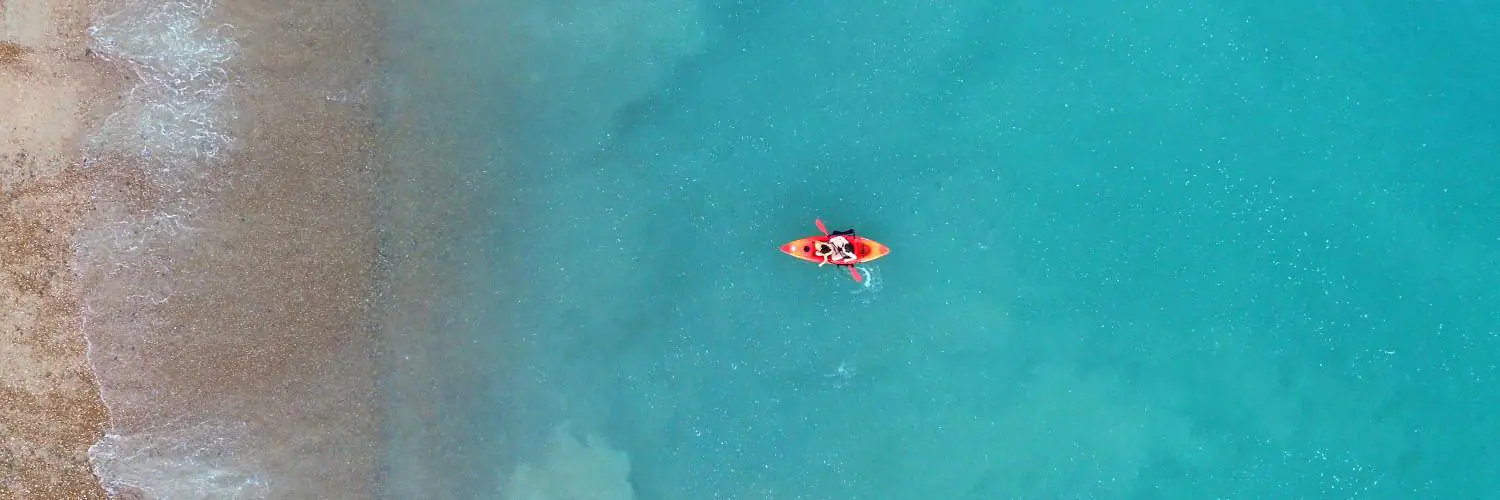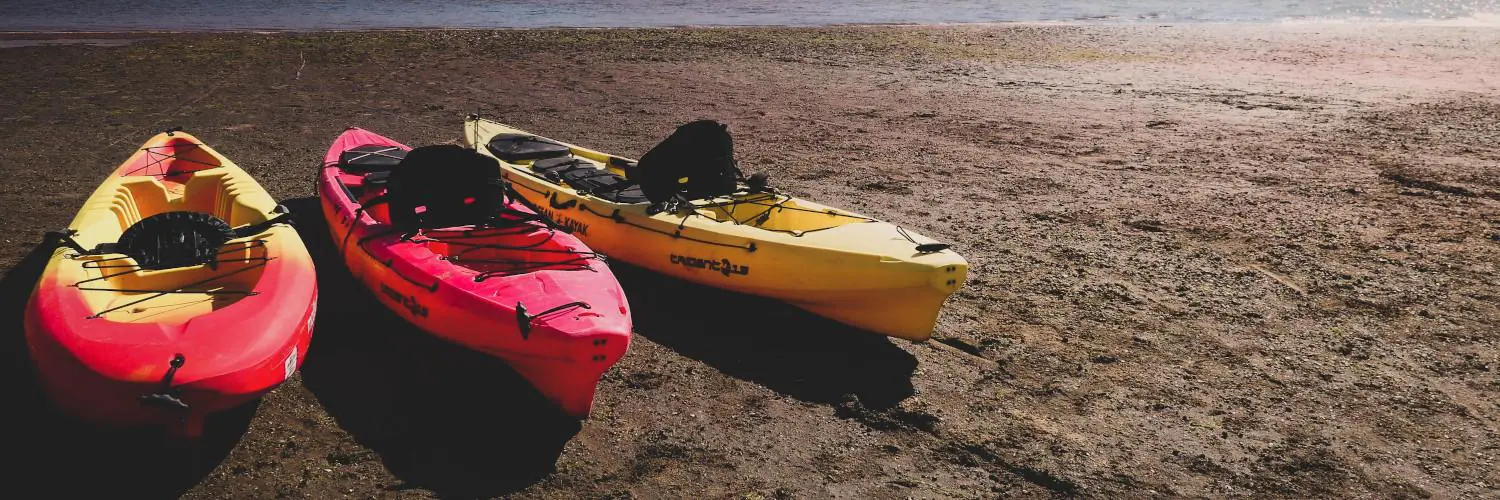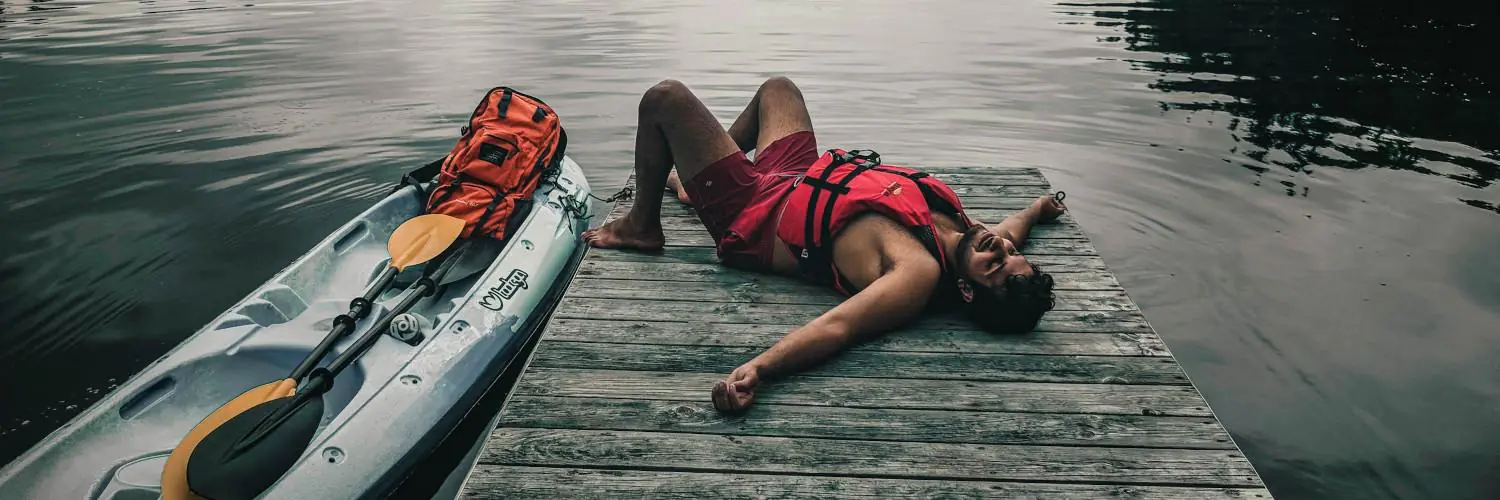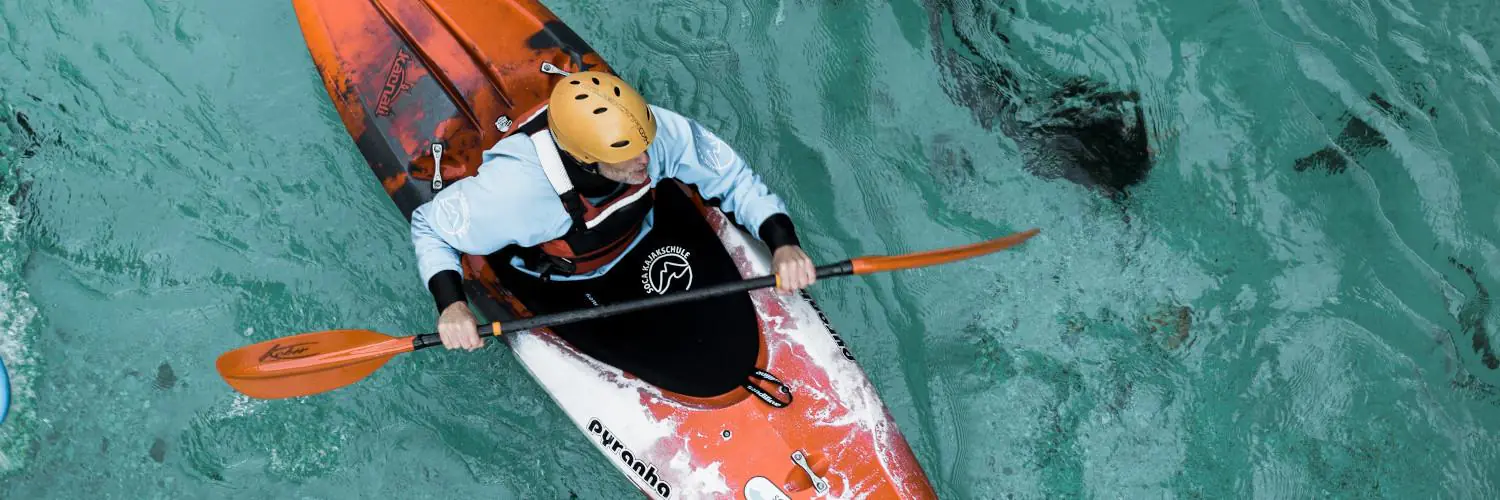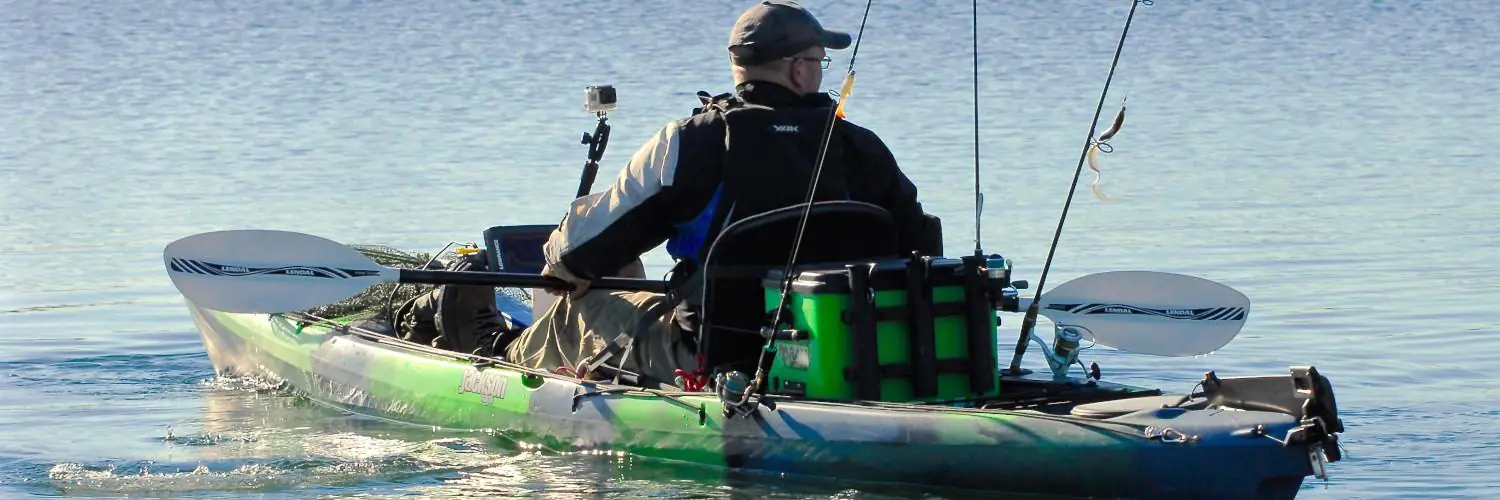Kayak fishing enthusiasts often face the challenge of maintaining their position while on the water. A kayak anchor trolley offers a smart solution to this problem. This simple yet effective system allows anglers to adjust their anchor point without moving the entire kayak.
A kayak anchor trolley is a set of pulleys, lines, and a ring attached to the side of a kayak that lets users control the position of their anchor from the cockpit. By sliding the ring along the trolley, fishermen can change their boat’s orientation relative to wind, current, or fishing spots. This setup proves especially useful in rivers or coastal areas where conditions can shift quickly.
The anchor trolley enhances the fishing experience by giving kayakers more control over their position. It allows for precise adjustments, making it easier to cast accurately or present bait in specific areas. Many fishing kayaks now come with pre-installed anchor trolley systems, reflecting their growing popularity among serious anglers.
Table of Contents
Understanding Kayak Anchor Trolleys
Kayak anchor trolleys are simple but useful systems that give kayakers more control over their position on the water. They let you adjust where your anchor connects to your kayak without having to move.
Components of an Anchor Trolley System
A kayak anchor trolley system has a few key parts. The main piece is a rope or cord that runs along the side of the kayak. This cord goes through pulleys at the front and back of the boat.
There’s also a ring that slides along the cord. This ring is where you attach your anchor line. A cleat on the kayak lets you lock the ring in place once you’ve positioned it.
Some systems use plastic tubing to protect the kayak’s surface from wear. The whole setup is usually made of materials that can handle being in water often.
Types of Kayak Anchors Used with Trolleys
Grapnel anchors are popular for use with kayak anchor trolleys. These anchors have multiple prongs that grab onto the bottom. They work well in different types of water bottoms.
Some kayakers use mushroom anchors. These are good for muddy or sandy bottoms. Stake-out poles are another option. They work best in shallow water where you can stick them into the bottom.
Drift chutes are not anchors, but they can be used with trolleys too. They slow down your drift in windy conditions or currents.
Benefits of Using a Kayak Anchor Trolley
Kayak anchor trolleys offer several advantages. They give you more control over your kayak’s position. You can adjust your angle to the wind or current without moving your whole boat.
For fishing, this means you can face different directions to cast. You can also change your spot slightly without pulling up your kayak anchor.
Anchor trolleys make it easier to deploy and retrieve your anchor. You don’t have to reach far over the side of your kayak. This is safer and more stable.
They also let you anchor from different points on your kayak. This is helpful in changing conditions. You can switch from bow to stern anchoring quickly.
Installing a Kayak Anchor Trolley
Adding an anchor trolley to your kayak lets you control your position on the water. This useful add-on is fairly simple to install with the right tools and materials.
Tools and Materials for Installation
You’ll need some basic tools to install an anchor trolley:
- Drill with bits
- Screwdriver
- Pliers
- Measuring tape
- Marker
The main materials include:
• Anchor trolley kit (with pulleys, padhooks, cord) • Paracord • Silicone sealant
Most kits have the needed hardware. Check that you have all parts before starting.
Selecting the Right Position for Your Trolley
Pick a spot along the side of your kayak for the trolley. Good places are:
• Just behind the seat • Near the center of the boat • Away from other gear
Mark where you’ll put the pulleys and pad eyes. Space them about 3-4 feet apart. Make sure the cord can move freely.
Step-by-Step Installation Instructions
- Drill holes for the pulleys and pad eyes. Use the right size drill bit.
- Apply sealant to the holes.
- Install the pulleys and pad eyes. Tighten them well.
- Thread the cord through the pulleys.
- Tie knots to keep the cord in place.
- Add any extra hardware like cleats.
- Test the trolley to make sure it slides smoothly.
Take your time with each step. Double-check your work as you go. With care, you’ll have a working anchor trolley in no time.
Operational Techniques
Kayak anchor trolleys offer flexibility for positioning in various conditions. Proper use involves adjusting for environmental factors and using different tools to maintain position.
Adjusting the Trolley for Wind and Currents
Wind and currents greatly impact kayak positioning. Move the trolley ring forward or backward to change the anchor point. For headwinds, shift the ring toward the bow. This keeps the kayak’s nose into the wind. For tailwinds, move the ring toward the stern. This prevents the kayak from swinging sideways.
In strong currents, position the anchor point slightly upstream of your desired spot. This helps maintain a steady position. Adjust the trolley as needed if the current changes.
Always test different positions to find the best setup for your conditions. Small adjustments can make a big difference in stability.
Securing the Anchor Line
Proper line attachment is key for effective anchoring. Thread the anchor line through the trolley ring. Use a quick-release knot for safety. This allows fast detachment if needed.
Leave some slack in the line to absorb shock from waves or boat wakes. Too much tension can cause the anchor to drag or the kayak to tip.
For added security, use a cleat on your kayak to hold the anchor line. This prevents accidental release. Make sure the cleat is within easy reach from your seated position.
Using a Drift Sock with Your Trolley
A drift sock slows your kayak’s movement in windy conditions or strong currents. Attach it to the trolley ring just like an anchor line. Position the trolley ring at the stern for maximum effect.
Adjust the size of the drift sock opening to control your speed. A wider opening creates more drag. This is useful in very windy conditions.
Use the trolley to change the drift sock’s position. This alters your kayak’s angle relative to the wind or current. Experiment to find the best setup for your fishing spot.
Advanced Anchoring Strategies
For precise positioning, use a stakeout pole with your trolley. This works well in shallow waters. Slide the pole through the trolley ring and into the riverbed or lakebed.
In deeper waters, try using two anchors. Attach one to the bow trolley and one to the stern trolley. This prevents swinging in changing winds or currents.
For river fishing, use the trolley to set up a “downstream V” anchor system. This involves two anchor lines set at angles downstream. It keeps your kayak steady in moving water.
Practice these techniques in calm conditions before trying them in challenging environments. This builds confidence and skill in using your anchor trolley system.
Accessory Integration
Kayak anchor trolleys work seamlessly with other kayak gear. They boost fishing efficiency and let you add helpful tools to your setup.
Combining with Kayak Accessories
Anchor trolleys pair well with many kayak add-ons. You can attach rod holders near the trolley for easy access while anchored. Some anglers connect their fish finders to the trolley ring. This keeps the screen in view as you reposition.
Stake out poles slide right into the trolley ring. These poles hold your kayak steady in shallow water. The YakAttack LeverLoc anchor trolley has a special design for stakes. Its cam cleat grips poles tightly.
Many kayakers add cleats near their trolleys. These give more tie-off points for anchor lines. Some even link their trolleys to kayak rudder systems for better control.
Enhancements for Fishing Efficiency
Anchor trolleys make kayak fishing more productive. You can add multiple rod holders along the trolley track. This lets you switch fishing spots quickly without moving your whole kayak.
Some trolleys come with built-in tackle storage. You can keep lures and tools within arm’s reach. Power anchoring systems work great with trolleys too. These use electric motors to drop and lift anchors.
Trolleys let you attach drift chutes easily. These slow your kayak in strong currents for better fishing. You can also add kayak outriggers to your trolley setup. This gives extra stability when reeling in big fish.
Environmental Considerations and Safety
Kayak anchor trolleys require careful use to protect both paddlers and aquatic ecosystems. Proper techniques help maintain safety and minimize environmental impacts in different water conditions.
Using Anchor Trolleys in Shallow Water
In shallow areas, anchor trolleys need special care. Dragging anchors can damage fragile habitats on the bottom. Use a shallow-water anchor pole instead of a traditional anchor when possible. This reduces harm to plants and animals living on the lake or river bed.
Adjust the trolley to position the anchor at the kayak’s stern in very shallow spots. This keeps the anchor line from tangling with your paddle strokes. Be aware of changing water depths as you move. Reposition the anchor as needed to avoid grounding.
River Fishing and Anchor Management
River anglers face unique challenges with anchor trolleys. Fast currents require extra caution. Use a quick-release system to detach the anchor in emergencies. This prevents the kayak from getting pulled under in strong flows.
A drag chain works well for river fishing. It allows subtle position adjustments without fully anchoring. Slide the trolley ring to fine-tune your angle to the current. Always face upstream when anchored in moving water.
Watch for obstacles like fallen trees or rocks. Be ready to quickly shift the anchor point if conditions change.
Precautions for Preserving Waterway Habitats
Responsible anchor use protects delicate underwater environments. Avoid dropping anchors on coral reefs, seagrass beds, or other sensitive areas. Look for sandy spots to anchor instead.
Clean your anchor and line after each trip. This stops the spread of invasive species between waterways. Check local regulations about anchoring in protected zones.
When fishing, use the trolley to position your kayak for casting without disturbing shoreline habitats. This reduces erosion and protects nesting areas for birds and other wildlife.

